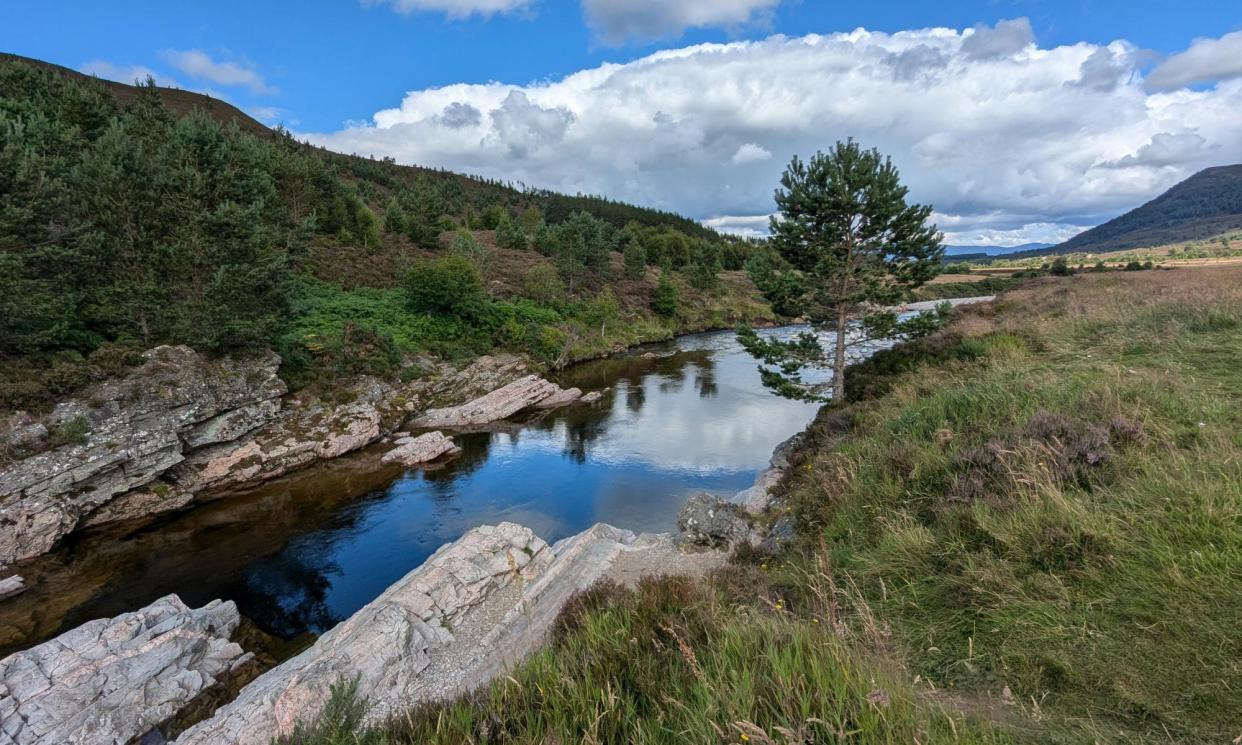Country diary: A valley revived, as far as the eye can see

The Feshie is a river of time and change. It’s a sunny morning when we pedal up through the pine forests along its western banks. Some of these trees are commercial plantation, but others are fragments of the ancient Caledonian forest. It was nearly destroyed by the felling of successive wars, leaving Glen Feshie a wasteland of stumps by the mid-1940s. Regeneration was hampered by overgrazing until new estate management over the past 25 years, including controversial but effective deer culls, ushered in a revival of the original trees: scots pine, birch, rowan, willow, alder and juniper.
The artery of the glen is the river. It is born high in the humpy brown hills to the south of us and descends on a wiggly route east, then north, then east again till it turns a sudden elbow back to the west. Curving along the bottom of the central Cairngorms, it gathers tributaries like eager acolytes, till it swells and flows north, all the way to the River Spey. Much of the route we cycle now is a glacial trough, marked by river terraces and alluvial fans.
As the valley widens, the Feshie becomes increasingly braided and unpredictable, often flooding, often changing course. But this combination of shifting riverbed, surrounding slopes and returning tree cover makes it a unique haven for wildlife. Glen Feshie is now home to steadily recovering populations of golden eagles, ospreys, pine martens, red squirrels and many more. Rare insects breed in the gravel beds, trout flash their rainbow colours and Atlantic salmon spawn. The crofters and shooting clients of previous centuries are giving way to walkers, birdwatchers and bikers like us, and, increasingly, swimmers. In a spot that locals call “the pony bridge”, the Feshie narrows through boulders into a deep, slow pool that is perfect for a summer dip.
We dump our bikes in the heather, plunge into the clear, cold flow, then enjoy a flask of coffee in the sunshine, wildflowers nodding in the breeze. The river is old, its route carved over thousands of years, yet every droplet drying on my skin fell from the sky and has never been this way before. Here is the ancient made new.
• Country diary is on Twitter at @gdncountrydiary
• Under the Changing Skies: The Best of the Guardian’s Country Diary, 2018-2024 (Guardian Faber) is published on 26 September; pre-order now at the guardianbookshop.com and get a 20% discount


